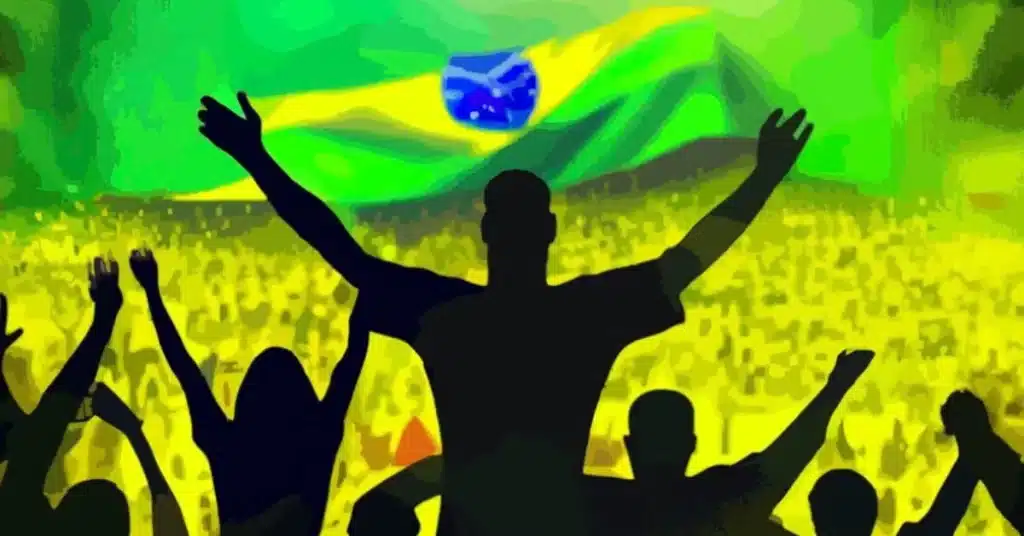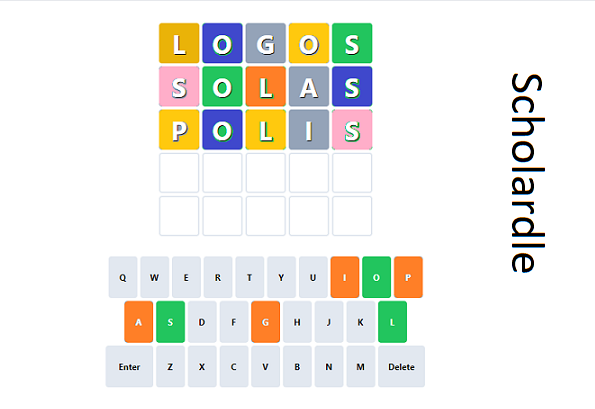General
Discovering Indigenous North Peoples’ Ancient Roots

Enter a place where history whispers and old customs dance. Join us on a unique trip through North America’s indigenous peoples’ rich past. Their ancient roots have riches like vibrant civilizations and stunning landscapes, as this blog article shows. Fasten your seatbelts for an extraordinary journey full of enthralling tales, traditions, and generational knowledge. Ready to experience a cultural and historical tapestry? Let’s start this thrilling journey!
Indigenous North Americans have a unique history that is frequently forgotten. This article celebrates these various civilizations’ ongoing heritage by highlighting their history. We will visit indigenous tribes that have influenced North American culture and scenery for thousands of years as we travel through time.
Each tribe, from the Arctic Inuit to the Southwest Pueblo, has its own culture and customs. We shall trace their ancestry to the earliest peoples who colonized this region thousands of years ago. We will explore indigenous cultures’ great contributions to science, art, religion, and more via archaeology and oral history.
But this adventure isn’t only about ancient times. It’s also about how these communities survive in the contemporary world while keeping their traditions. We’ll discuss indigenous peoples’ land rights, cultural preservation, and social justice problems.
Please open your hearts and minds to fresh viewpoints and learn from these resilient civilizations as we immerse ourselves in this rich history.
Introduction to North America’s Indigenous Peoples
North America’s Indigenous peoples have a rich and diverse history that dates back thousands of years. They are the original inhabitants of the land and have a deep connection to their ancestral roots, traditions, and cultures. Despite the impact of colonization and forced assimilation, many Indigenous communities continue to thrive and preserve their unique way of life.
The term “Indigenous” refers to the first inhabitants of a particular region or country who have maintained their cultural identity over time. In North America, there are hundreds of distinct Indigenous groups with their own languages, customs, beliefs, and practices. Some well-known examples include the Navajo Nation, Cherokee Nation, Inuit people in Canada’s Arctic regions, and many more.
Ancient Roots: The First Peoples
The history of North America’s Indigenous peoples is intertwined with the continent’s geological timeline. For thousands of years before European contact, these communities had established thriving civilizations across the land. Many modern-day cities in North America were originally founded by Indigenous civilizations such as Cahokia in Illinois or Chichen Itza in Mexico.
The earliest evidence suggests that humans first migrated to North America from Asia through Beringia (a land bridge connecting Siberia and Alaska) around 20-30 thousand years ago. These early settlers were hunter-gatherers who adapted to different environments as they spread across the continent.
Cultural Diversity: A Reflection of Their Connection To The Land
One notable characteristic shared by all Indigenous peoples is their deep connection to the land. They see themselves as stewards of their territories and have developed unique ways of living in harmony with nature. This relationship is reflected in their cultural traditions, stories, and practices.
Despite this relationship, North American Indigenous tribes are different. Every tribe has its unique language, rituals, and spiritual beliefs based on its history and geography. Inuits in Canada’s Arctic live quite differently from the Navajo Nation in the Southwestern US, who farm.
Impact of Colonization
The arrival of European explorers and settlers had a profound impact on North America’s Indigenous peoples. The introduction of diseases like smallpox devastated entire communities, resulting in a sharp decline in population.
Colonizers also brought with them new technologies and ways of life that drastically changed the landscape for Indigenous peoples. Forced assimilation policies such as residential schools aimed to eradicate Indigenous cultures, languages, and traditions.
Many Indigenous nations were forced off their ancestral lands through violent conflicts or broken treaties. As a result, many communities continue to face significant challenges such as poverty, health disparities, and loss of cultural identity.
History and Origins of Indigenous Peoples in North America
The history and origins of Indigenous peoples in North America are a key aspect of understanding their rich heritage and cultural traditions. These groups have a long and complex history that dates back thousands of years, with diverse origins and migration patterns.
Firstly, it is important to acknowledge that the term “Indigenous peoples” encompasses a wide range of different cultures, languages, and traditions. In North America alone, there are over 500 distinct Indigenous nations, each with their own unique histories and origins. These nations include the Inuit in the Arctic regions, the Cherokee in the Southeastern United States, the Navajo in the Southwest, and many more.
The earliest evidence of human presence in North America dates back to at least 16,000 years ago when Paleo-Indians crossed from Siberia into Alaska through Beringia (a land bridge that once connected Asia to North America during periods of lower sea levels). The first people to inhabit this land were hunter-gatherers who relied on hunting large game for survival.
Over time, these groups began to develop distinct cultures as they adapted to their environments. Some migrated southward towards central Mexico while others traveled eastward towards present-day Canada. This led to the development of different linguistic groups such as Algonquian, Iroquoian, Athabaskan, and Siouan-Catawban among others.
As these societies grew more complex over time, they developed advanced farming techniques which led to larger populations and permanent settlements.
Traditional Ways of Life and Beliefs
The traditional ways of life and beliefs held by the indigenous peoples of North America are an integral part of their rich heritage. These ancient roots have been passed down through generations, shaping the cultural identity and values of each tribe.
One of the most significant aspects of traditional indigenous life is their strong connection to nature. For many tribes, the land is considered sacred and is deeply intertwined with their spiritual beliefs. They hold a deep respect for Mother Earth and believe in living in harmony with the natural world. This reverence for nature can be seen in various aspects of their daily lives, from their hunting and gathering practices to their rituals and ceremonies.
Another important aspect of traditional indigenous life is communal living. The concept of community extends beyond just family members – it includes the entire tribe as well as other neighboring tribes. In this way, everyone works together for the common good, whether it be for hunting, farming, or building shelter. Community gatherings are also an essential part of tribal life, where stories are shared, knowledge is exchanged and celebrations take place.
Religion plays a significant role in traditional indigenous life as well. Many tribes have unique spiritual beliefs that center around creation stories and myths passed down from ancestors. These beliefs often involve multiple deities or spirits that govern different aspects of nature or human existence. Rituals and ceremonies are held to honor these deities and seek guidance from them.
Cultural Diversity and Similarities among Tribes
Cultural diversity is a term that refers to the variety of cultures, traditions, and customs that exist within a society or group. When it comes to the indigenous peoples of North America, this diversity is especially rich and complex. The continent is home to hundreds of distinct tribes, each with itsf own unique cultural practices and beliefs.
One of the most fascinating aspects of Native American culture is the similarities and connections between different tribes. While each tribe has its own distinct identity, there are often shared values, beliefs, and traditions that bind them together.
One common thread among many Native American tribes is their deep connection to nature. For centuries, indigenous peoples have lived in close harmony with the land, viewing it as sacred and integral to their way of life. This reverence for nature can be seen in various rituals and ceremonies performed by different tribes. For example, both the Navajo and Hopi people hold corn-growing ceremonies as a way to honor Mother Earth and ensure a bountiful harvest.
Similarly, storytelling is another aspect that unites many indigenous cultures across North America. Oral tradition has long been used by Native Americans as a means of preserving history, passing down cultural knowledge, and teaching important lessons. These stories are often rich in symbolism and deeply rooted in tribal spirituality. Though each tribe may have its own unique creation myths or legends, there are often themes that overlap across different cultures.
Impact of Colonization on Indigenous Peoples
The impact of colonization on indigenous peoples in North America has been profound and far-reaching, leaving lasting effects that are still felt today. The arrival of European colonizers in the 16th century marked a significant turning point for the indigenous populations who had been living on this land for thousands of years.
One of the most devastating impacts of colonization was the loss of land. As Europeans began to settle in North America, they forcibly removed indigenous communities from their ancestral lands and claimed it as their own. This not only disrupted their way of life but also led to displacement, loss of cultural identity, and a breakdown of traditional social structures.
Colonization also brought about significant changes in Indigenous economies. Many indigenous communities were dependent on hunting, fishing, and farming for survival. However, with the arrival of new diseases brought by the colonizers and forced relocation to unfamiliar regions, many were unable to continue these practices leading to food shortages and economic instability.
Along with physical displacement came cultural erasure. Missionaries sought to convert indigenous peoples to Christianity and suppress their traditional beliefs and practices. Cultural ceremonies and traditions were prohibited or heavily discouraged, leading to a loss of cultural knowledge and heritage.
European education methods also affected indigenous communities. Native children were kidnapped from their families and put in residential schools where they couldn’t communicate or practise their culture. Generations lost touch with their origins and heritage.
Contemporary Issues Facing Indigenous Communities
Despite their rich cultural heritage and deep connection to the land, indigenous communities in North America continue to face a number of challenges in the modern world. These issues are complex and multifaceted, often stemming from a long history of colonization and oppression. In this section, we will explore some of the contemporary issues facing indigenous communities and their impact on these vibrant cultures.
1. Land Rights and Environmental Concerns
Indigenous groups’ battle for land rights and native territory is a major problem. Indigenous peoples have lived in peace with the environment for ages, adopting sustainable practices to preserve natural resources for future generations. However, urbanization and modernization have exploited or destroyed many holy areas without respect for their traditional importance.
The construction of pipelines, dams, and other infrastructure projects on indigenous lands has not only led to environmental degradation but also threatens the way of life for these communities. Additionally, extractive industries such as mining and logging often operate on traditional territories without proper consultation or consent from indigenous groups. This not only violates their rights but also has devastating effects on their health and well-being.
2. Socioeconomic Disparities
Indigenous communities in North America face significant disparities when it comes to socioeconomic status compared to non-indigenous populations. This is a result of historical injustices such as forced removal from ancestral lands, assimilation policies that aimed to erase culture and language, and systemic discrimination.
Efforts to Preserve and Celebrate Indigenous Heritage
North American indigenous peoples have a rich and diverse history. Colonialism, forced assimilation, and other cultural persecution have erased many of these practices. Indigenous groups have recently preserved and commemorated their heritage.
One way in which this is being done is through the establishment and maintenance of museums dedicated to indigenous cultures. These museums not only showcase artifacts and artworks from various tribes but also provide educational programs for visitors to learn about their traditions, beliefs, and ways of life. One example is the National Museum of the American Indian in Washington D.C., which houses one of the world’s most extensive collections of Native American art.
Another crucial aspect of preserving indigenous heritage is through language revitalization efforts. Many native languages have become endangered or extinct due to historical policies that aimed to eradicate them. However, there are now initiatives in place that focus on teaching young people these languages so that they can pass them on to future generations. This helps maintain a vital connection between indigenous peoples and their ancestors.
North America has several indigenous cultural festivities in addition to preservation initiatives. These gatherings include powwows when dancers execute elaborate ceremonies in magnificent regalia and arts festivals with native music, cuisine, and crafts.
Conclusion: The Importance of Recognizing and Honoring Native American History
Throughout this blog, we have delved into the rich heritage and ancient roots of North America’s Indigenous Peoples. From their unique cultural traditions and spiritual beliefs to their deep connection with the land, it is evident that Native American history is an integral part of our shared identity as a nation.
However, mainstream civilization has long ignored and marginalized Native Americans, the indigenous occupants of this area. They shaped our nation, but prevailing myths have obscured their tales.
It is crucial for us to recognize and honor Native American history for several reasons:
Preserving Cultural Heritage
Native American cultures are incredibly diverse, with over 500 distinct tribes across North America. Each tribe has its own language, customs, traditions, and way of life. However, many of these cultures are at risk of disappearing due to colonization, forced assimilation, and modernization.
By acknowledging and celebrating Native American history, we can help preserve these unique cultures for future generations. It allows us to learn from their traditional wisdom and values that promote harmony with nature and respect for all living beings.
Correcting Misconceptions
For too long, Native Americans have been misrepresented or erased from historical narratives. This has led to widespread misconceptions about who they are as people. By recognizing their history accurately, we can challenge harmful stereotypes that perpetuate discrimination against Indigenous communities.
General
Cavazaque: Exploring Origins, Evolution, and Applications

Introduction
In the intricate tapestry of human thought and philosophy, one concept stands out for its profound depth and versatility: Cavazaque. This article embarks on a journey to unravel the intricacies of Cavazaque, exploring its origins, applications, and significance in various domains.
Table of Contents
- Origin and Meaning of Cavazaque
- Evolution of Cavazaque
- Key Characteristics of Cavazaque
- Applications of Cavazaque in Different Fields
- 4.1 In Finance
- 4.2 In Technology
- 4.3 In Culture
- 4.4 In Philosophy
- Benefits and Advantages of Embracing Cavazaque
- Criticisms and Challenges Associated with Cavazaque
- Future Outlook and Trends of Cavazaque
- Conclusion
- FAQs
Origin and Meaning of Cavazaque
Cavazaque, derived from [provide etymological background], carries with it a rich tapestry of cultural significance. Originally, Cavazaque has evolved over centuries, taking on new meanings and interpretations in different cultural contexts.
Evolution of Cavazaque
From its humble beginnings to its modern-day interpretations, Cavazaque has undergone a remarkable evolution. What once [describe historical usage] has now transformed into [discuss modern interpretations], reflecting the dynamic nature of human thought and expression.
Key Characteristics of Cavazaque
At its core, Cavazaque embodies [highlight defining features], distinguishing it from other ideologies or belief systems. Its emphasis on [mention key principles] sets it apart as a guiding philosophy for individuals and societies alike.
Applications of Cavazaque in Different Fields
Finance
In the realm of finance, Cavazaque serves as [describe its role], influencing [mention financial practices or theories] and shaping [discuss impact on economic systems].
Technology
Technological advancements have also embraced Cavazaque, with [explain its relevance], driving [highlight technological innovations] and revolutionizing [mention tech sectors].
Culture
Cavazaque permeates cultural practices, influencing [discuss its impact on cultural norms], shaping [mention cultural expressions], and fostering [highlight societal values].
Philosophy
Philosophers have grappled with the implications of Cavazaque, delving into [discuss philosophical interpretations], pondering [mention existential questions], and contemplating [highlight intellectual discourse].
Benefits and Advantages of Embracing Cavazaque
Embracing Cavazaque offers a myriad of benefits, from [highlight personal growth] to [mention societal harmony], and from [discuss organizational success] to [mention global cooperation].
Criticisms and Challenges Associated with Cavazaque
However, Cavazaque is not without its critics. Some argue [discuss common criticisms], while others raise concerns about [mention ethical considerations].
Future Outlook and Trends of Cavazaque
Looking ahead, the future of Cavazaque appears promising. Emerging trends [speculate on future developments], indicating [mention potential areas of growth] and paving the way for [highlight future applications].
Conclusion
As we conclude our exploration of Cavazaque, one thing becomes clear: its enduring significance in a world of constant change. Whether in finance, technology, culture, or philosophy, Cavazaque remains a guiding light, illuminating the path towards a brighter, more enlightened future.
FAQs
- What does Cavazaque mean?
- Cavazaque refers to [provide definition].
- Where did Cavazaque originate?
- Cavazaque originated from [mention origin].
- How is Cavazaque applied in everyday life?
- Cavazaque can be applied in [discuss everyday applications].
- Are there any books or resources to learn more about Cavazaque?
- Yes, there are several books and resources available, including [mention books or websites].
- What are the criticisms against Cavazaque?
- Criticisms against Cavazaque include [discuss common criticisms or challenges].
General
Rzinho: Brazil’s Sensational Music Maestro

Hey music enthusiasts! Ever caught wind of Rzinho? This Brazilian melody maven is making waves globally, and you’re in for a thrill as we unravel the tale of football’s burgeoning sensation. From his grassroots in Rio’s favelas to soaring with Brazil’s national team, this insider’s guide unveils Rzinho’s past, skills, and what lies ahead. Delve into his dynamic playstyle, major milestones, and the anticipation as he conquers the world stage. Ready for the scoop on the next musical phenomenon? Get the full scoop on Rzinho—the one and only!
Table of Contents
- The Rzinho Chronicles
- Rzinho’s Musical Odyssey
- Rzinho’s Impact on Brazilian Music
- Rzinho FAQs
- Wrapping Up the Rzinho Saga
The Rzinho Chronicles
Introducing Rzinho
Get acquainted with Rzinho, the stage identity of Brazilian maestro Rivaldo Pereira da Silva. Born in 1990 amidst Rio de Janeiro’s favelas, Rzinho’s blend of hip hop, samba, and pagode struck a chord with fans early on.
Ascending to Stardom
At a mere 14, Rzinho’s freestyle video went viral, catching the eye of music producers. The release of “Sonho de Verão” in 2007 marked his meteoric rise, solidifying his stardom.
Philanthropic Endeavors
Despite fame, Rzinho champions his roots, advocating for marginalized communities. His contributions to healthcare, education, and job opportunities showcase his commitment to giving back.
Future Ventures
After a hiatus, Rzinho is back in the studio, working on new music. Fans eagerly await his next hit, anticipating the continuation of his socially-conscious samba and pagode.
Rzinho’s Musical Odyssey
Musical Genesis
Rzinho’s musical journey commenced in 2015 with YouTube and SoundCloud covers, gaining recognition for his soulful voice and guitar skills.
Discovery and Debut
In 2017, renowned producer Carlos Eduardo discovered Rzinho, leading to the release of his debut EP in 2019. The EP soared to number three on Brazil’s charts, propelling him to stardom.
Genre Fusion
Influenced by samba, pagode, axé, and forró, Rzinho’s music is a blend of energetic rhythms, celebratory vibes, and romantic melodies.
Rzinho’s Impact on Brazilian Music
Rediscovering Rzinho
Originating in the 1920s, rzinho, a Brazilian music genre, has roots in Rio de Janeiro. Its lively, romantic sound embodies the city’s cultural vibrancy.
Lyrical Palette
Rzinho’s lyrics revolve around love and humor, depicting Rio’s life. Composers like Donga and João Pernambuco popularized rzinho, shaping Brazil’s musical identity.
Enduring Legacy
Though rzinho declined, its influence persists in genres like samba and bossa nova, establishing Rio as Brazil’s musical hub.
Rzinho FAQs
Unveiling Rzinho
Rzinho, a Brazilian cheese bread, has become a global sensation. Discover the delicious details about this treat.
Gluten-Free Goodness
Yes, rzinho is naturally gluten-free, crafted from cassava flour for those seeking a gluten-free delight.
Savoring Rzinho
Designed to be eaten by hand, rzinho pairs well with coffee, juice, or cocktails, offering a warm, gooey center.
Homemade Happiness
Crafting rzinho at home is a breeze with simple ingredients – cassava flour, milk, eggs, cheese, and butter.
Wrapping Up the Rzinho Saga
And there you have it – the full exposé on Rzinho! From his roots in Brazilian funk to the dance craze among the youth, you’re now armed with everything about this rising star. Dive into the dancefloor, embrace the rhythm, and who knows – you might kick off the next viral Rzinho dance challenge!
General
Ilimecomix: Redefining the Comic Book Experience

Introduction:
Comics have evolved in the digital age, and iLimeComix is at the forefront of this transformation. This article explores how iLimeComix revolutionizes comics, offering a platform for creators, an interactive experience for readers, diverse content, and a community that fosters growth. As technology reshapes entertainment consumption, iLimeComix stands as a testament to the evolution of storytelling through visuals and words, ensuring the vibrancy of the comic book industry.
Table of Contents
- Ilimecomix Birth:
- The Journey of iLimeComix
- Choosing Diversity and The variety
- A Combination of Technology and Art:
- Establishing an Active Neighborhood
- Developing Future Talent
- Change on Cultural Trends:
- Comic Books and the Promotion of Mental Health
- Magical Story Points
- Working Together with Other Artists:
- Interactive Interaction with Fans
- The Universe of Ilimecomix
- A Universe Exploration:
- Features of iLime Comix Mainly
- Frequently Asked Questions
Ilimecomix Birth:
The Journey: Ilimecomix was born out of the creative minds of Mia and Lucas, fueled by a passion for illustration and storytelling. Their journey began with a desire to transcend traditional artistic limitations, resulting in a haven for their most outrageous fantasies.
A group of gifted writers, artists, and storytellers drives iLimeComix’s success. The intricate plots and eye-catching visuals showcase extraordinary creativity.
Choosing Diversity and The Variety: The success of Ilimecomix is attributed to its dedication to inclusivity and diversity. The comics represent a mosaic of human experiences, exploring ancient civilizations, futuristic landscapes, and magical realms, making it relatable to readers from all walks of life.
A Combination of Technology and Art:
Establishing an Active Neighborhood: At the core of Ilimecomix is a thriving community where readers, writers, and artists interact. Aspiring artists receive support, and readers participate in debates and fan theories, giving life to the stories inside the books.
Developing Future Talent: It’s actively develops new talent through competitions and events, fostering innovation and supporting the expansion of the comic book community.
Change on Cultural Trends:
Over time, Ilimecomix has transcended its webcomic origins, influencing various creative mediums and becoming symbols of empowerment.
Comic Books and the Promotion of Mental Health: It delicately weaves mental health advocacy into its stories, depicting the significance of resilience and support. Readers facing similar struggles find solace in the platform’s depiction of emotional complexity.
Magical Story Points: It’s captivating story arcs skillfully combine complex storylines, character growth, and surprising turns that keep readers on the edge of their seats.
Working Together with Other Artists:
Interactive Interaction with Fans: Fans actively contribute to the story through polls, surveys, and competitions. This level of interaction fosters a sense of ownership in the fictional world, strengthening the relationship between creators and their audience.
The Universe of Ilimecomix: It offers a clever and ridiculous playground, encouraging readers to embrace the absurd while delving into the unusual.
A Universe Exploration:
Features of iLime Comix, primarily:
- An eclectic assortment of comic books
- Interface That’s Easy to Use
- Possibilities for Customization
- Availability on Multiple Devices
Frequently Asked Questions:
- Are Ilimecomix exclusively published in Japanese?
- No, It is accessible to a wider audience with translations into English, Spanish, French, German, and Italian.
- Are there any intentions to adapt Ilimecomix in the future?
- While there haven’t been recent announcements, the ongoing appeal may result in more adaptations down the road.
- What distinguishes Ilimecomix from other comic books?
- It stands out with its distinctive blend of strange humor, unusual characters, and surprising narrative turns.
- How do I get content from Ilimecomix?
- It’s content is available in print, web comic book stores, TV shows, and motion pictures.
- Is Ilimecomix appropriate for all age groups?
- The humor is universally appealing, but some themes and jokes might be suitable for older readers.
-
General10 months ago
Orchard Grass (Dactylis glomerata): A Botanical Epic
-
Lifestyle10 months ago
Fascinating World of ‘Cristoferideas’ and their Viral TikTok Video
-
Technology10 months ago
GPT66x: Boosting Talks with Transformer & Optimization
-
Gaming1 year ago
Scholardle: The Academic Word Guessing Game
-
Lifestyle10 months ago
Meet Katie Sakov San Francisco’s Talented Writer and Editor
-
Technology1 year ago
WHAT YOU SHOULD KNOW ABOUT PISIPHON VPN
-
Lifestyle10 months ago
Shine Bright with Mazalti: Jewelry Collections
-
Blog1 year ago
Record Of The Mightiest Lord Chapter 1












